It is often the case that restaurant owners grapple with concerns of loose table bases. Part of the solution is proper maintenance and care for the product. Bases come in a variety of styles but certain careful instructions could help prevent any instability.
The most common concern brought to my attention is the wobble from loosened or lost glides. As a solution for lost glides, as well as a solution for many other table base woes, it is advisable to pick up and carry tables rather than slide them. If a glide is lost, they are replaceable. Like other parts on a base, they are threaded and can loosen or tighten depending on the direction it is turned. Sliding the glides against the floor may cause them to turn completely off of the base.

The threaded mechanisms of the base include the center rod which keeps the base parts together. The three parts of almost every base includes the base bottom, column and spider. The center rod begins at the base bottom that rests on the floor, through the column in the middle, and is tightened on the other side of the spider, the part which attaches to the table tops. As with the glides, constant rigorous movement against the floor may loosen this bolt and cause a wobbly base. A preventative measure is to pick up the tables to move them, but the base can be fixed if necessary.

To tighten the loosened base, the base will have to be flipped upside down, which will bring the end of the center rod and the nut into view. Before tightening the nut, the bolt head must be secured within the indentions on the bottom side of the bottom base. Also, the column should line up within the indentions on the base and spider wherein the base fits securely. At this point, the nut can be tightened. The simplest method is to prop up the bolt from the floor with a wedge and often you’ll find you can use a tire iron to tighten the nut effectively.
Not all bases are created equally, and neither are they connected to table tops the same way. For stone table tops, it is necessary to adhere a wood block with industrial adhesive to the underside of the stone and then attach the table base to the block with screws. Here, the weight of the table may create a situation where it is difficult to lift the table with ease. Unfortunately, if the table screws rip from the block, there will a more complicated fix that perhaps will not yield the best results. If the screws rip from the wood block, the block may be left unusable. The block will then have to be removed and another one will have to be adhered. This may cause problems as the block is already at the center of the weight distribution. The industrial adhesive may make it too difficult to remove the old block entirely.
In the interest of maintaining a long lasting table, it is very important to always lift tables before moving them. Sliding them may cause problems down the road that taking the time to lift the heavy table can prevent easily. The best solutions are preventative, and certainly lifting tables to move them is a solution to preventing problems down the road.
 The threaded mechanisms of the base include the center rod which keeps the base parts together. The three parts of almost every base includes the base bottom, column and spider. The center rod begins at the base bottom that rests on the floor, through the column in the middle, and is tightened on the other side of the spider, the part which attaches to the table tops. As with the glides, constant rigorous movement against the floor may loosen this bolt and cause a wobbly base. A preventative measure is to pick up the tables to move them, but the base can be fixed if necessary.
The threaded mechanisms of the base include the center rod which keeps the base parts together. The three parts of almost every base includes the base bottom, column and spider. The center rod begins at the base bottom that rests on the floor, through the column in the middle, and is tightened on the other side of the spider, the part which attaches to the table tops. As with the glides, constant rigorous movement against the floor may loosen this bolt and cause a wobbly base. A preventative measure is to pick up the tables to move them, but the base can be fixed if necessary.
 To tighten the loosened base, the base will have to be flipped upside down, which will bring the end of the center rod and the nut into view. Before tightening the nut, the bolt head must be secured within the indentions on the bottom side of the bottom base. Also, the column should line up within the indentions on the base and spider wherein the base fits securely. At this point, the nut can be tightened. The simplest method is to prop up the bolt from the floor with a wedge and often you’ll find you can use a tire iron to tighten the nut effectively.
Not all bases are created equally, and neither are they connected to table tops the same way. For stone table tops, it is necessary to adhere a wood block with industrial adhesive to the underside of the stone and then attach the table base to the block with screws. Here, the weight of the table may create a situation where it is difficult to lift the table with ease. Unfortunately, if the table screws rip from the block, there will a more complicated fix that perhaps will not yield the best results. If the screws rip from the wood block, the block may be left unusable. The block will then have to be removed and another one will have to be adhered. This may cause problems as the block is already at the center of the weight distribution. The industrial adhesive may make it too difficult to remove the old block entirely.
In the interest of maintaining a long lasting table, it is very important to always lift tables before moving them. Sliding them may cause problems down the road that taking the time to lift the heavy table can prevent easily. The best solutions are preventative, and certainly lifting tables to move them is a solution to preventing problems down the road.
To tighten the loosened base, the base will have to be flipped upside down, which will bring the end of the center rod and the nut into view. Before tightening the nut, the bolt head must be secured within the indentions on the bottom side of the bottom base. Also, the column should line up within the indentions on the base and spider wherein the base fits securely. At this point, the nut can be tightened. The simplest method is to prop up the bolt from the floor with a wedge and often you’ll find you can use a tire iron to tighten the nut effectively.
Not all bases are created equally, and neither are they connected to table tops the same way. For stone table tops, it is necessary to adhere a wood block with industrial adhesive to the underside of the stone and then attach the table base to the block with screws. Here, the weight of the table may create a situation where it is difficult to lift the table with ease. Unfortunately, if the table screws rip from the block, there will a more complicated fix that perhaps will not yield the best results. If the screws rip from the wood block, the block may be left unusable. The block will then have to be removed and another one will have to be adhered. This may cause problems as the block is already at the center of the weight distribution. The industrial adhesive may make it too difficult to remove the old block entirely.
In the interest of maintaining a long lasting table, it is very important to always lift tables before moving them. Sliding them may cause problems down the road that taking the time to lift the heavy table can prevent easily. The best solutions are preventative, and certainly lifting tables to move them is a solution to preventing problems down the road. 
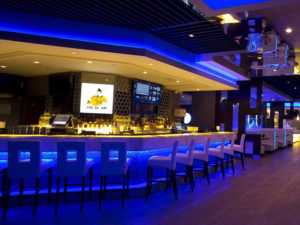
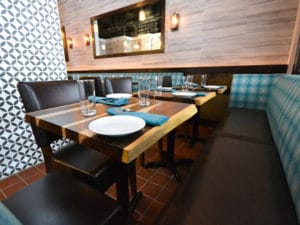
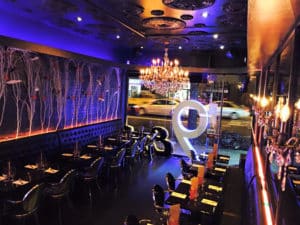
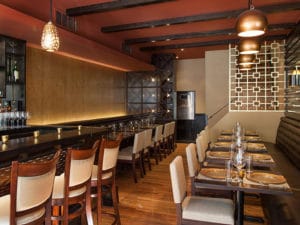

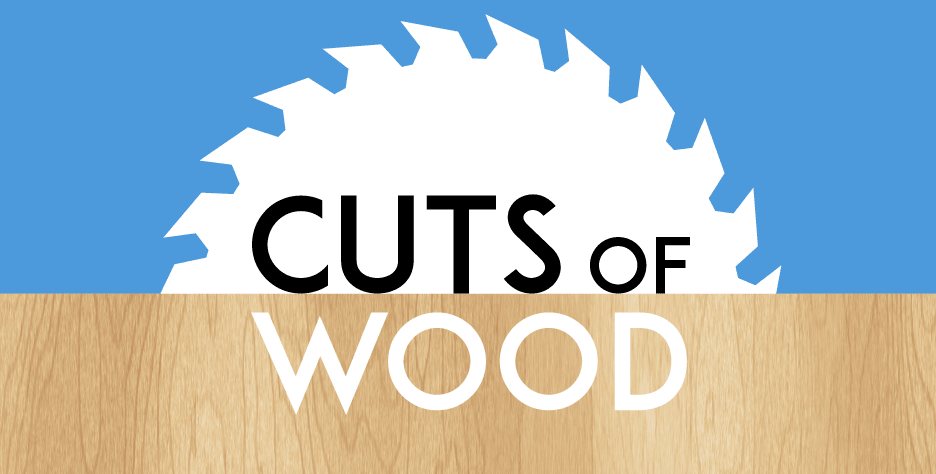
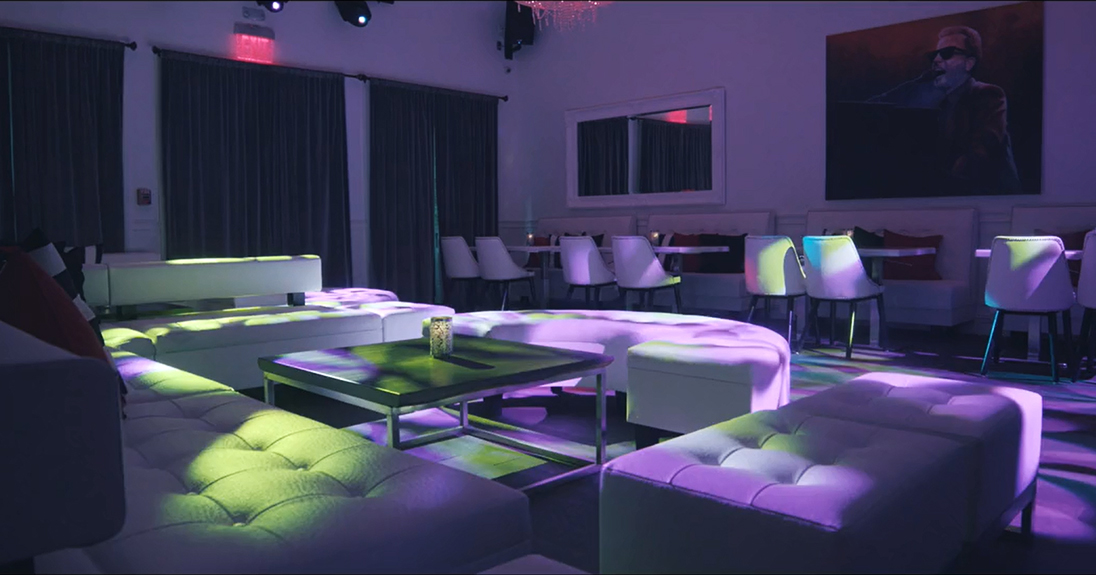
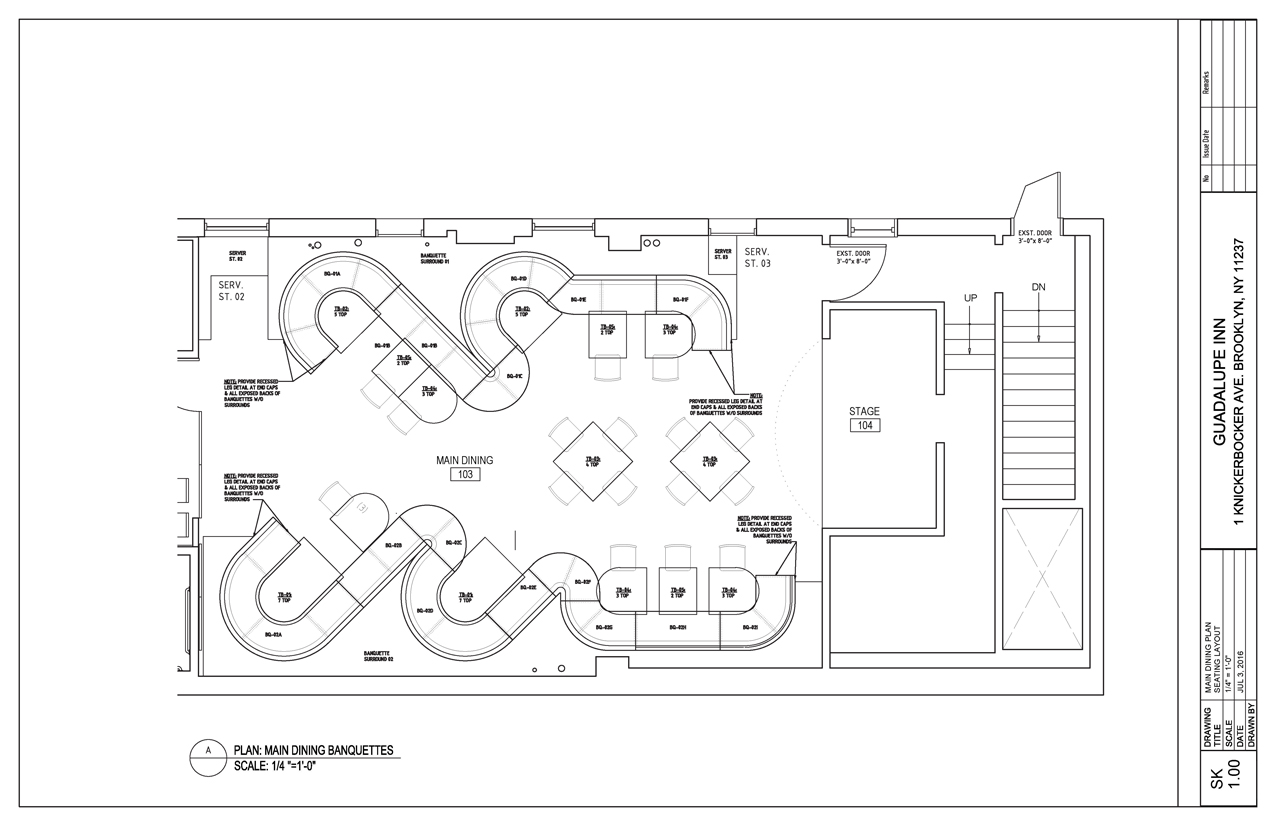
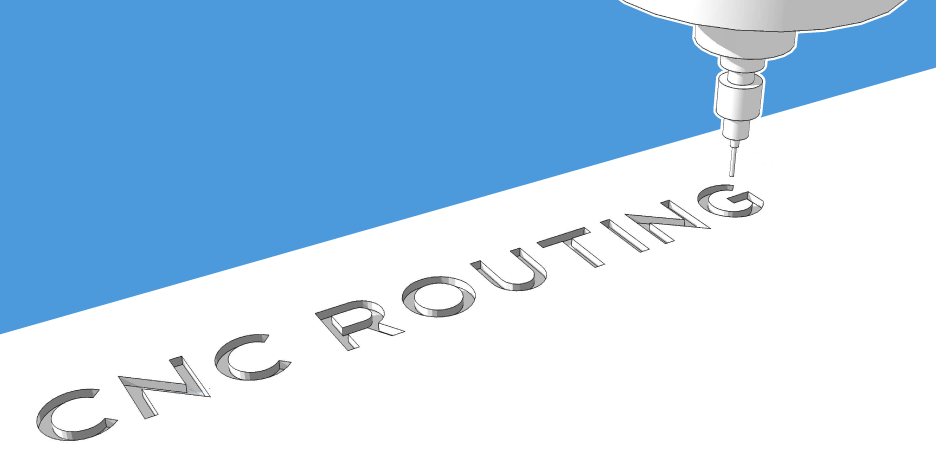



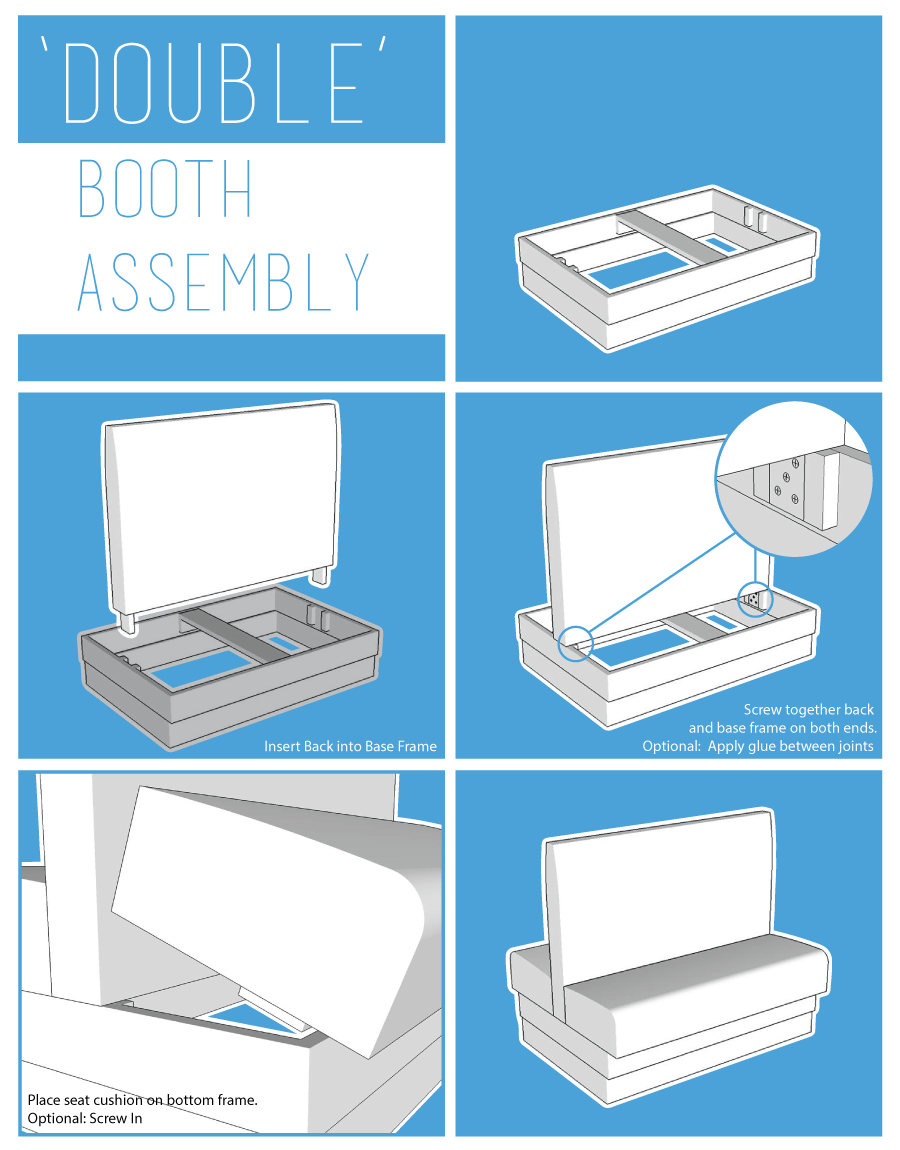
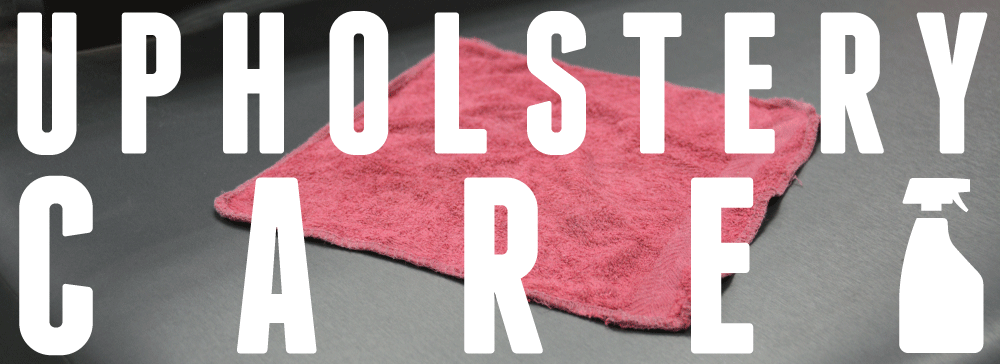

 Sizing matters in terms of the size of the original table and the extended table. A 30” x 30” may open to a 42” round. A 36” x 36” may open to a 51” round. Another option to consider is the mechanisms in which the drop leaf is propped up.
Sizing matters in terms of the size of the original table and the extended table. A 30” x 30” may open to a 42” round. A 36” x 36” may open to a 51” round. Another option to consider is the mechanisms in which the drop leaf is propped up.
 There are two types of common mechanisms to compare. One is the spring hinge, and the other is a bolt hinge. At Maxsun we focus on the ability for the mechanism to withstand commercial grade use and so highly advise the bolt hinge, as it lasts longer and is the most durable for commercial use. The spring hinge is used in some residential grade drop leaf table tops, but is not recommended for a longer lasting table.
Please note that some applications may not be suitable for the bolt system because it may get in the way of the table base (example: 24″ x 24″ – 36″R)
There are two types of common mechanisms to compare. One is the spring hinge, and the other is a bolt hinge. At Maxsun we focus on the ability for the mechanism to withstand commercial grade use and so highly advise the bolt hinge, as it lasts longer and is the most durable for commercial use. The spring hinge is used in some residential grade drop leaf table tops, but is not recommended for a longer lasting table.
Please note that some applications may not be suitable for the bolt system because it may get in the way of the table base (example: 24″ x 24″ – 36″R)